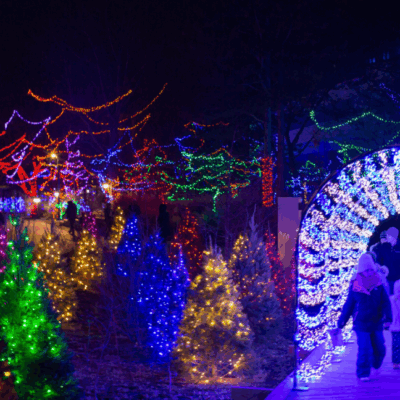Events & Information
Check out the latest events along the river.
Whether it’s an enriching program or cleanup at one of the river parks or an offering from some of the largest cultural and entertainment attractions in Central Indiana, White River is the backdrop for events for all interests.

Featured Events

Jingle Rails
December 28 @ 10:00 am

Kwanzaa Community Celebration: Roots and Rhythm: Living Kwanzaa 365
December 28 @ 11:00 am

Christmas at the Zoo
December 28 @ 5:00 pm
Related Links & Downloads
Many organizations, groups, businesses, cities and towns love the White River and have plans for the future. We’re keeping track of some of the key plans, projects, and initiatives related to the river.
Featured FAQs
For the same reason the Lenape people (the inhabitants of the area when European settlers arrived) called the river “Wapahani,” or river of white sands. While erosion and sediment loads today obscure it, the river’s bottom is often white limestone or limestone sand, giving the river a gleaming white reflection on sunny days.
Check out the White River Alliance’s Live Conditions page to see risk levels associated with water level and pollution. There are two stretches that do meet EPA’s water quality standards for swimming: the river from about 66th Street to about 82nd Street in Indianapolis and adjacent to River Road Park in Carmel. Except for these two locations, the entire river is “impaired,” meaning that it does not meet water quality standards for swimming. This is particularly true after rain events (especially south of Fall Creek), when pollution is swept into the river. During dry weather we recommend “feet, not face,” meaning its fine to touch the river, just don’t do things like swimming that would splash water into your face (and also avoid getting water in any open wounds). Learn more on our water quality page.
It depends on the type of fish, who’s eating them, and how often. The Indiana State Department of Health maintains a map of fish consumption advisories for all waterways in Indiana. This site gives recommendations for sensitive populations as well as the general population and will tell you how much of a type of fish is safe to each over a timeframe.
Yes, unless the water levels are too high and fast. Check out the White River Alliance’s Live Conditions page to see risk levels associated with water level and pollution. We recommend “feet, not face,” meaning its fine to touch the river, just don’t do things like swimming that would splash water into your face (and also avoid getting water in any open wounds), particularly after a rain event.
The people do! The river and its riverbed are held in trust by the State of Indiana for use by everyone. This includes a small portion of the shoreline up to something called the “ordinary high watermark”, which isn’t always able to seen. Always assume that most of the land along the river is private property. Please be respectful of these owners and do not trespass. Learn more about river rights.
During normal flows, the river isn’t naturally very deep in most places, and in some places during the summer you can easily walk across it. The dams on the river do create much deeper pools though, and the closer you get to them the deeper the water can be (the tallest dam on the river is 20 feet tall). Never go near a dam.
